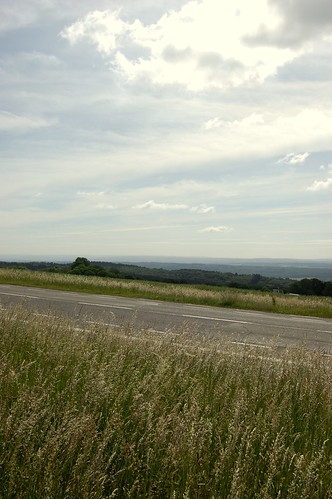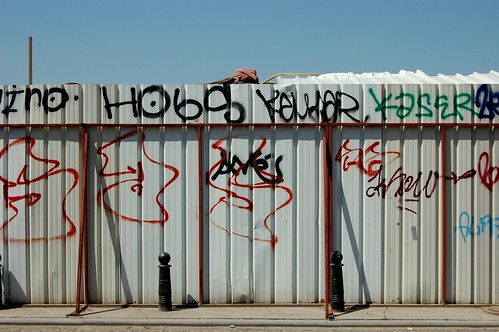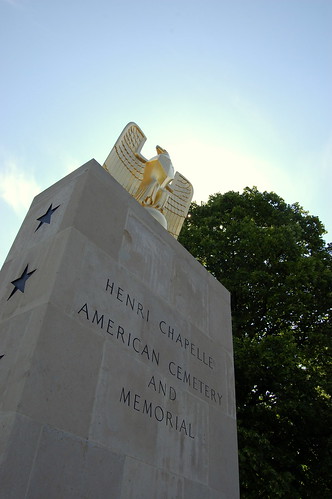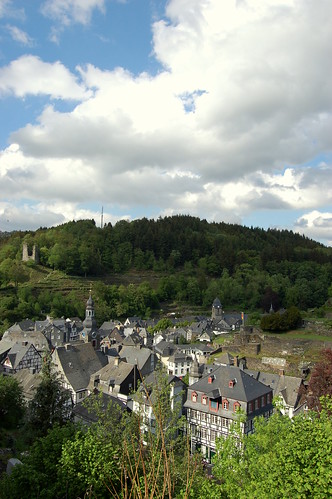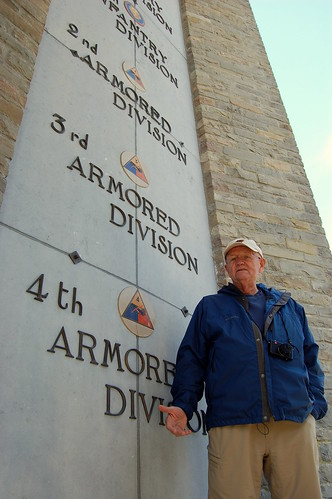Norwich University and the Battle of the Bulge: Conclusions
/ Sixty-Seven Years ago, on December 16th, 1944, the German military struck back against Allied forces in Belgium, the first major blow to the advance to Germany. During the battle, over a hundred members of the Norwich University community participated; former students who had graduated and advanced in the ranks of the U.S. military, and students who had graduated early to join the fight. They fought under some of the harshest conditions imaginable, and succeeded after a month of combat in the Ardennes. In 2010, I began a research project for the University, studying the role of the students and the school in the Battle before travelling overseas to Belgium. They played an incredible role in the battle, and undoubtably helped with many of the successes that would eventually lead to an Allied victory.
Sixty-Seven Years ago, on December 16th, 1944, the German military struck back against Allied forces in Belgium, the first major blow to the advance to Germany. During the battle, over a hundred members of the Norwich University community participated; former students who had graduated and advanced in the ranks of the U.S. military, and students who had graduated early to join the fight. They fought under some of the harshest conditions imaginable, and succeeded after a month of combat in the Ardennes. In 2010, I began a research project for the University, studying the role of the students and the school in the Battle before travelling overseas to Belgium. They played an incredible role in the battle, and undoubtably helped with many of the successes that would eventually lead to an Allied victory.
Conclusions
While the German attack on December 16th caught the allied forces by surprise, the response was swift: US leaders recognized the strength of the attack, and took swift steps in negating the German advance further into Belgium: holding actions by the 106th and 28th Infantry Divisions helped to stall the German forces long enough to position reinforcements towards the edge of the withdrawal. In particular, the actions at St. Vith delayed the German forces long enough for the 101st Airborne Division and the 10th Armored Divisions to move into Bastogne, where they denied the German military a key crossroads, thus helping slow their attack further west.
Further actions from the 2nd and 3rd Armored Divisions, the 82nd and 17th Airborne Divisions and the 84th and 26th Infantry Divisions helped to halt the German advance and push it back, closing the gap within a month, and closing the salient in 41 days. Considering the logistical element of coordinating the forces of two, multi-national (largely American) armies numbering in the hundreds of thousands of soldiers, vehicles and supplies, this seems to be an astonishing feat.
Norwich University alumni played key roles in the battle, most notably those in the 2nd and 3rd Armored Divisions, but with others playing smaller roles that helped define the successes that they earned over the course of the campaign. Norwich’s heritage and emphasis on equestrian training and tactics brought numerous Norwich men into armored cavalry units, a dominant force in the battle.
As in the Normandy invasion, Norwich had a presence in every part of the battle where American soldiers fought, from the north and south shoulders of the battle, to Bastogne, St. Vith and the attacks in the West, at Marche, during every point in the campaign, from the opening salvos on December 16th to the end as the gap between the 1st and 3rd Armies closed.
Direct combat experience on the battlefield was not a prerequisite for a direct impact on the battle. For the hundreds of soldiers on the ground, there were others who helped to support their efforts from afar, such as Major Duffy Quinn ’34, of the 3rd Armored Division as a logistical officer:
Duffy is the S-4 of Combat Command B and has gone down in history as one of the greatest experts on logistics in this war. We never lacked supplies of any kind all through the campaign, and, even in the dash through Belgium into Germany, when it was necessary to go over 100 miles to the rear to obtain gasoline,, Duffy kept our tanks and vehicles rolling. (Maj. Duffy Quinn, '34, Expert on Logistics, Cp. Riley, '32 Reports 1945)
Norwich played a meaningful role in the training of the men involved in the battle. Lieutenant Colonel Clifton Batchelder noted in a University survey years later that the “Four years of living in the Corps of Cadets with all the lessons, discipline, combined with the tactical instruction…” was most valuable during the war. (C. Batchelder n.d.)
Numerous men would continue with their military careers: Generals Ernest Harmon and I.D. White continued to serve in the Army following the war, as did Arthur Pottle, who rejoined the military for Korea, and eventually worked at the Redstone Arsenal under Werner von Braun, where they developed the US’s first guided missiles. Timothy Donahue Jr. returned to Northfield, Vermont, where he became the town’s postmaster for many years afterwards – fitting, as he worked as the divisional message chief in the 2nd Armored Division. James Burt lived in New Hampshire, where he taught high school. Harmon would later return to Norwich University, to serve as president for fifteen years.
While only around 13% of the men involved held the rank of Major or above (Major, 4.85, Colonel, 1.92%, Lieutenant Colonel 4.81%, General 1.92%), a far greater number held the rank of Captain at 22.12%, with an even greater number of Lieutenants, 32.12% making up the population. Enlisted men made up a total of 19.23% (Sergeant, 8.655, Corporal. 4.81% and Private 5.77%), with a further 12.5% of the men holding an unknown rank. The numbers would seem to indicate that a majority of the Norwich population held some form of leadership role, and thus some interpretation of the orders that they received from their superiors, interpreting them for the men under their command and carrying them out.
Indeed, a letter from General Harmon to Vermont Representative and former Norwich University President Charles A. Plumley on January 28th, just days after the Bulge officially ended, outlines his own admiration of the men from the school:
“I had many fine Norwich men in the [2nd Armored] Division, and I am happy to report that I have turned it over to a Norwich Man, Brigadier General I.D. White, to command… Other Norwich men are Johnson, who will be G-3 of the Division; [Batchelder], who you will remember, is now a Lieutenant Colonel commanding a tank battalion; and there are hosts of other junior officers who are all top-notch lads and are doing fine.”
Bibliography
- "1940 Class Survey." Northfield: Norwich University.
- Baker, Herbert A. "Career Questionnaire - Norwich University." Norwich University, July 1953.
- Batchelder, Arthur. "Letter."
- Batchelder, Clifton, interview by Norwich University. Survey
- "Biographical Sketch, Ralph H. Baker Jr." Northfield: Norwich University, July 1953.
- Brown, Albert Galatin. "Survey." Norwich University, 1987 - 1990.
- Burt, James. "Letter to Francis." Norwich University Archives, January 11, 1945.
- "Letter to Francis." Norwich University Archives, December 30, 1944.
- Christie, Dr. Robert. "Archival Files." Norwich University Archives.
- Cole, Hugh M. United States Army in World War II: The European Theater of Operations: The Ardennes: The Battle of the Bulge. Washington, DC: U.S. Government Printing Office, 1964.
- Cook, Bradford A. "Archival Files." Norwich University Archives.
- Dean, Jerry. Memorial Day means more for local vets. 5 25, 2006. http://www.farragutpress.com/articles/2006/05/4927.html (accessed 11/15/11).
- Eisenhower, John S. D. The Bitter Woods: The Battle of the Bulge. Cambridge, Massachusetts: Da Capo Press, 1995.
- Gothard, Kristin A. "Deseased Notices for the Classes of 1944-1951." Northfield: Norwich University, October 25, 2006.
- "Deseased Notices for the Classes of 1978-1987." Norwich University, March 15, 2006.
- Harmon, Ernest M. Combat Commander: Autobiography of a Soldier. New Jersey: Prentice Hall, 1970.
- Henry, Walter. "World War II Years." 6.
- Kelly, Jacques. "George Norman Anderson Jr. Obituar." Baltimore Sun.
- Baltimore, February 15, 2009.
- MacKeerer, Donald, interview by Andrew Liptak. (November 14, 2011).
- Miller, Ted. "Letter to Ernest Harmon." Harmon Files, Norwich University Archives.
- Noriwch University Record. "Lt. Dick Bullens, '40, Wounded in Belgium." March 2, 1945: 17.
- Norwich University. "Donald Wing Deceased Constituent File."
- Norwich University. "John Carey Lee, Jr. ("Jack") 155 E. Main, Norwich N.Y." October 1, 1947.
- Norwich University. "Lt. Arnold MacKerer, '46, Dies of Wounds." March 2, 1945: 4.
- Norwich University Record. "1600 Norwich Men in Service, 1218 Are Officers."
- January 5, 1945: 1.
- Norwich University Record. "1st Lieutenant Frederick D. Wing, '44." June 22, 1945.
- Norwich University Record. "Capt. John McGauley, '41, Names Norwich Men With Him At Bastogne." April 27, 1945: 18.
- Norwich University Record. "Col. John MacDonald, '20, Avenges Hogan's 400."
- March 2, 1945: 8.
- Norwich University Record. "Corp. Henry Waters, '46, Missing in Action." March 2, 1945: 28.
- Norwich University Record. "Howard Chilson, '41." June 11, 1948.
- Norwich University Record. "James Logan, '45." March 16, 1945: 8.
- Norwich University Record. "Lt. Bob Christie, '44, Gets Quinn Welcome." March 30, 1945: 12.
- Norwich University Record. "Lt. Carl Huges, '42, with Capt. Al Hicks, '36, At Hurtgen Forest." March 2, 1945: 31.
- Norwich University Record. "Lt. Col. Blanchard, '36, Twice Decorated." March 2, 1945: 25.
- Norwich University Record. "Lt. Col. Henry Learned, '30, Shows Germans A Trick."
- March 2, 1945: 16.
- Norwich University Record. "Lt. Don McKerer, '46, Visits Brother's Grave." March 30, 1945: 14.
- Norwich University Record. "Lt. George Campbell '44, Wounded in Same Action."
- May 25, 1945: 28.
- Norwich University Record. "Lt. Leonard Wing, '45, Is German Prisoner." March 2, 1945: 20.
- Norwich University Record. "Lt. Tom Vollenweider, '46, Killed Over Belgium." June 8, 1945: 9.
- Norwich University Record. "Maj. Duffy Quinn, '34, Expert on Logistics, Cp. Riley, '32 Reports." March 2, 1945: 14.
- Norwich University Record. "Maj. Gen. Harmon, '16 And His 2ndnd Armored Break Runstedt Drive." February 2, 1945: 18.
- Norwich University Record. "Maj. General Harmon '16, And His 2nd Armored Break the Runstedt Drive." February 2, 1945: 18.
- Norwich University Record. "Maj. Sherwood Adams, '34, Fighting In Belgium."
- February 2, 1945: 16.
- Norwich University Record. "Perley Brainerd, '40, Named Postmaster at Bradford." March 1955.
- Norwich University Record. "Pfc. John Bacon, '47, Reports His Travels." April 13, 1945: 15.
- Norwich University Record. "Pvt. John Hurlburt, '45, Wounded at Aachen."
- February 2, 1945: 19.
- Norwich University Record. "S.Sgt. Walt Henry, '45, Wins Quick Promotions."
- May 25, 1945: 31.
- Norwich University Record. "Sgt. Edwin Seeger, '46, Killed In Breakthrough." March 2, 1945.
- Norwich University Record. "T-4 Seeger, '46, Died Defending Post." April 13, 1945: 14.
- Norwich University Record. "T-5 Wesley Tibbetts, '45, Caught in Big Push." March 2, 1945.
- Norwich University Record. "Three Norwich Men Direct 2nd Armored Advance to Rhine."
- March 30, 945: 9.
- Norwich University Reecord. "Sgt. Burleigh A. Smith, '46." June 22, 1945: 8.
- Olson, David S. "Class of '45 Letter." Northfield: Norwich University, June 6, 1996.
- Pottle, Arthur, interview by Andrew Liptak. (10 15, 2011).
- Priscilla, N. Gilbert. "CPT James M. Burt, USA (RET)." Northfield: Norwich University,
- February 15, 2006.
- "Richard P Biggs Obituary." Patriot Ledger. Quincy, May 22, 2000.
- "Richard Sircom Bullens, 83." Portland Press,. Portland, May 1, 2001.
- Toland, John. Battle: The Story of the Bulge. Nebraska: Bison Books, 1999.
- War Whoop. Northfield: Norwich University, 1947.
- Whaley, David J. "Alumni Letter ." Norwich University, November 1990.


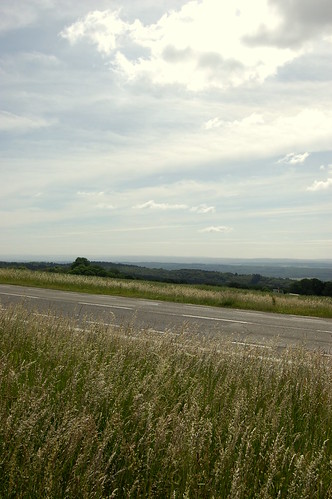 Sixty-Seven Years ago, on December 16th, 1944, the German military struck back against Allied forces in Belgium, the first major blow to the advance to Germany. During the battle, over a hundred members of the Norwich University community participated; former students who had graduated and advanced in the ranks of the U.S. military, and students who had graduated early to join the fight. They fought under some of the harshest conditions imaginable, and succeeded after a month of combat in the Ardennes. In 2010, I began a research project for the University, studying the role of the students and the school in the Battle before travelling overseas to Belgium. They played an incredible role in the battle, and undoubtably helped with many of the successes that would eventually lead to an Allied victory.
Sixty-Seven Years ago, on December 16th, 1944, the German military struck back against Allied forces in Belgium, the first major blow to the advance to Germany. During the battle, over a hundred members of the Norwich University community participated; former students who had graduated and advanced in the ranks of the U.S. military, and students who had graduated early to join the fight. They fought under some of the harshest conditions imaginable, and succeeded after a month of combat in the Ardennes. In 2010, I began a research project for the University, studying the role of the students and the school in the Battle before travelling overseas to Belgium. They played an incredible role in the battle, and undoubtably helped with many of the successes that would eventually lead to an Allied victory. Sixty-Seven Years ago, on December 16th, 1944, the German military struck back against Allied forces in Belgium, the first major blow to the advance to Germany. During the battle, over a hundred members of the Norwich University community participated; former students who had graduated and advanced in the ranks of the U.S. military, and students who had graduated early to join the fight. They fought under some of the harshest conditions imaginable, and succeeded after a month of combat in the Ardennes. In 2010, I began a research project for the University, studying the role of the students and the school in the Battle before travelling overseas to Belgium. They played an incredible role in the battle, and undoubtably helped with many of the successes that would eventually lead to an Allied victory.
Sixty-Seven Years ago, on December 16th, 1944, the German military struck back against Allied forces in Belgium, the first major blow to the advance to Germany. During the battle, over a hundred members of the Norwich University community participated; former students who had graduated and advanced in the ranks of the U.S. military, and students who had graduated early to join the fight. They fought under some of the harshest conditions imaginable, and succeeded after a month of combat in the Ardennes. In 2010, I began a research project for the University, studying the role of the students and the school in the Battle before travelling overseas to Belgium. They played an incredible role in the battle, and undoubtably helped with many of the successes that would eventually lead to an Allied victory. Sixty-Seven Years ago, on December 16th, 1944, the German military struck back against Allied forces in Belgium, the first major blow to the advance to Germany. During the battle, over a hundred members of the Norwich University community participated; former students who had graduated and advanced in the ranks of the U.S. military, and students who had graduated early to join the fight. They fought under some of the harshest conditions imaginable, and succeeded after a month of combat in the Ardennes. In 2010, I began a research project for the University, studying the role of the students and the school in the Battle before travelling overseas to Belgium. They played an incredible role in the battle, and undoubtably helped with many of the successes that would eventually lead to an Allied victory.
Sixty-Seven Years ago, on December 16th, 1944, the German military struck back against Allied forces in Belgium, the first major blow to the advance to Germany. During the battle, over a hundred members of the Norwich University community participated; former students who had graduated and advanced in the ranks of the U.S. military, and students who had graduated early to join the fight. They fought under some of the harshest conditions imaginable, and succeeded after a month of combat in the Ardennes. In 2010, I began a research project for the University, studying the role of the students and the school in the Battle before travelling overseas to Belgium. They played an incredible role in the battle, and undoubtably helped with many of the successes that would eventually lead to an Allied victory.
